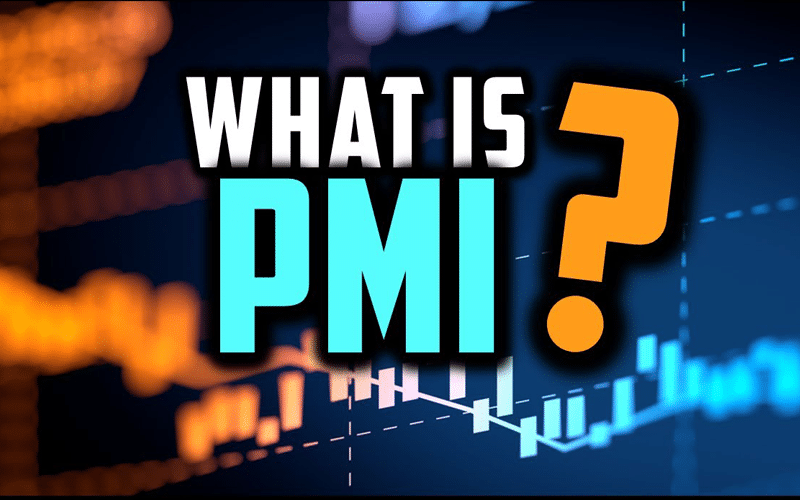
The Purchasers Manager Index (PMI) is an important economic data released every month to show the performance of the economy. The two most important providers of the PMI data are ISM Markit and the Institute of Supply Management (ISM).
IHS Markit, a publicly-traded company valued at more than $30 billion, is the biggest provider of the data in the world. It has long-standing relationships with key local institutions, who help carry out the studies. In the United States, the ISM is the leading provider of the data while in Canada, Ivey Business School provides the data.
The PMI data is one of the most closely-watched economic numbers in the trading industry. That is because it provides timely details of the performance of specific sectors in a country. It also helps to complement data released by government agencies like the Bureau of Labour Statistics (BLS) in the United States, Office of National Statistics (ONS) in the UK, and Eurostat in the Eurozone.
When are PMIs released?
PMI numbers are released every month. For some countries like the UK, EU, and Japan, Markit releases two main PMIs every month. In the final week of the month, the company releases the preliminary PMIs for the month. The company then releases the final manufacturing PMI for the country on the second working day of the month. In the United States, ISM releases the manufacturing PMI on the second working day of the month and the non-manufacturing PMI on the fourth working day of the month.
Traders can get a schedule of when the PMI data will come out in the economic calendar. This calendar is usually provided by various free platforms like Investing.com and FxStreet. It is also available in free trading platforms like MT5 and TradingView.
Types of PMIs in forex
There are four main types of PMIs in forex. The importance of these PMIs differs from country to country, depending on the composition of the economy.
Service PMI
The services PMI measures the performance of the service sector in an economy. In this, the researchers survey purchasing managers in the service sectors like restaurants, airlines, tourism, and event organisers. This is usually the most important number for most developed countries like the United States and the UK. That is because the services sector is responsible for more than 70% of the entire economy of the two countries.
Manufacturing PMI
The manufacturing PMI in forex measures the performance of the manufacturing sector. In this, they survey managers in industries like automobile manufacturing, food and beverages, and textile, among others. This PMI is important mostly for large manufacturing countries like China, Mexico, and Japan.
Construction PMI
The construction PMI in forex measures the performance of the construction sector. This data is usually released just for the UK market, where the construction sector employs millions of people.
Composite PMI
The composite PMI is released by Markit on the fourth working day of the month together with the services PMI. This data uses the manufacturing and services PMI data to come up with the overall PMI for the country.
Main parts of the PMI
As mentioned above, PMI is a survey data, meaning that the researchers talk directly to the companies under study. In this, they interview them on five key areas, which have different weighting to the index.
These five areas are:
- New orders – This index surveys whether companies are seeing more new orders or new business. More orders is a sign that the economy is growing. The new orders index represents 30% of the index.
- Output – This surveys whether the companies are increasing or reducing their output. This represents 25% of the total index.
- Employment – The employment survey measures whether companies are adding or reducing their workforce. In a growing economy, companies tend to add workers to deal with new orders and increase output. This represents 20% of the index.
- Suppliers delivery time – This index measures the amount of time companies take to fill orders. In a strong economy, firms take more time to deliver their orders. This one usually represents 15% of the PMI index.
- Stock of purchases – The index measures the amount of inventories that companies have. It represents 10% of the PMI index.
How the PMI in forex is calculated
When calculating PMIs, the researchers collect the data and then use a mathematical formula to calculate the final figure. The formula below shows how Markit calculates the PMI.
INDEX VALUE = (% ‘up’) + (0.5 * (% ‘the same’)) + (0.0 * (% reporting ‘down’))
In this formula, Markit takes the total percentage of respondents reporting an improvement. It then multiplies 0.5% with those answering the same. Finally, it multiplies with those reporting down and adds the three numbers.
As a result, the PMI is usually a diffusing index, with numbers ranging between zero and 100.
How to interpret PMI in forex
The most important figure in the PMI reading is 50. A figure above 50 is usually an indication that the sector is expanding while a figure below 50 is a sign that the sector is in contraction mode. For example, at the height of the coronavirus pandemic, the Eurozone manufacturing PMI declined to a record low of 33.4. That is because, at the time, most companies were not receiving new orders or even operating. The PMI figure then jumped to more than 51 when the economy started to reopen.
Most importantly, if the PMI falls from 58 to 52, the interpretation is that the sector is still in an expansion phase but the pace of increase has reduced. Similarly, if the PMI increases from 40 to 42, the interpretation is that the industry is in contraction but the pace of decline has started to improve.
Ideally, a strong PMI usually means that the economy is doing well, which could push a central bank to hike interest rates. As a result, it can lead to the strengthening of a country’s currency. For example, if the British PMI is great while the Eurozone PMI is not, the EUR/GBP pair may drop as the pound strengthens.
Final thoughts
Manufacturing and services PMIs numbers are important gauges of the state of an economy. The numbers are timely since they are released a day after a month ends. However, they are just one part one part of the bigger puzzle about the economy. As such, you should incorporate them with other economic data like industrial production, retail sales, and official employment data.








Leave a Reply